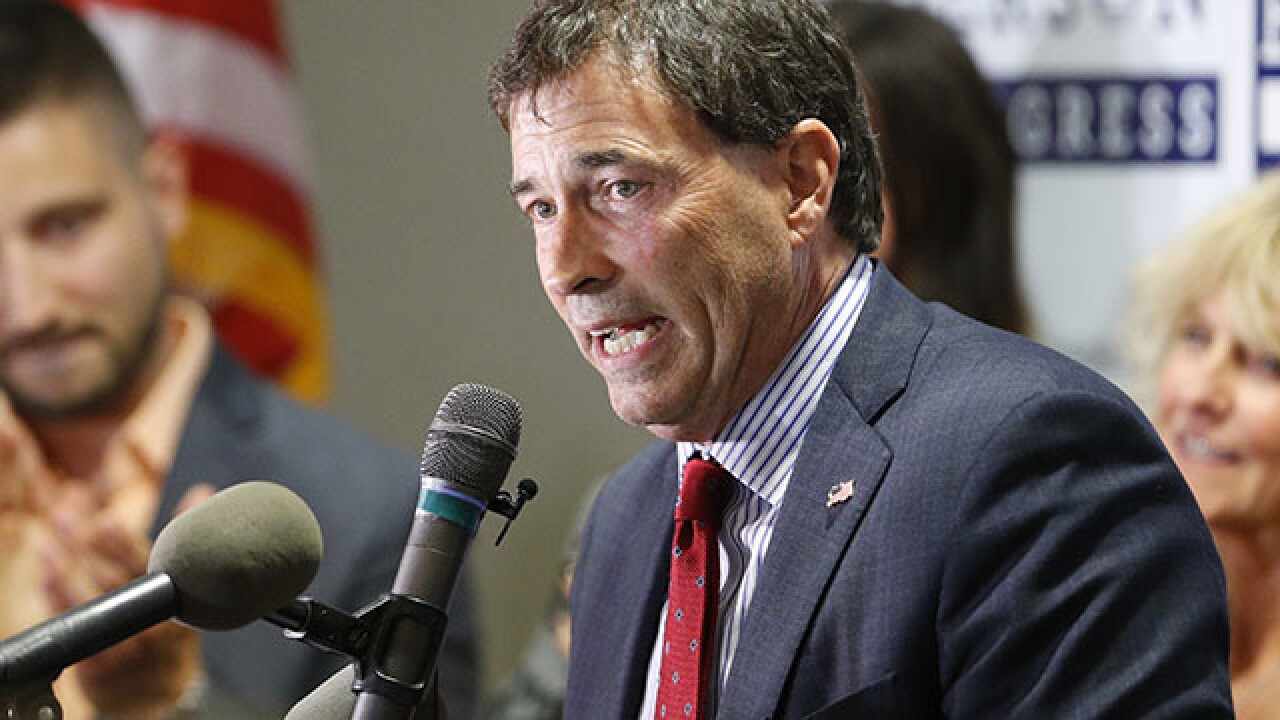A two-term state senator who was backed by President Donald Trump but who also promoted his ties to Trump critic Gov. John Kasich won a previously deadlocked congressional special election in Ohio, retaining a coveted open U.S. House seat long held by Republicans.
State Sen. Troy Balderson, of Zanesville, was certified Friday as the voters’ pick over Democrat Danny O’Connor, the Franklin County recorder, to complete the unexpired term of former long-time U.S. Rep. Pat Tiberi, who retired in January. After final absentee and provisional ballots were counted, Balderson defeated O’Connor by 1,680 votes — a mere 0.8-percent margin in a district Trump won by 11 points two years ago.
The result fell 520 votes outside the window to trigger an automatic recount.
Balderson, of Zanesville, and O’Connor, who’s from Columbus, must face off again for the full two-year term representing the meandering central Ohio district that stretches from Democrat-heavy Columbus into Trump-supporting suburban and rural areas north and east of Columbus. The race pits a 56-year-old Trump supporter with political experience against a 31-year-old challenger who, if elected, would be the youngest member of Congress.
The special election was a test of voter sentiment before November’s high-stakes general election, which will decide which political party controls the House. A key issue was the Republican tax cuts, which Balderson embraced in seeking to win the state’s wealthiest district and O’Connor criticized as a threat to Medicare and Social Security.
Balderson’s victory buoys Republicans concerned over how Trump might be playing among voters, especially in political battleground states such as Ohio. O’Connor’s odds were considered long in the gerrymandered district, which has been held by Republicans for nearly 35 years. A third candidate, the Green Party’s Joe Manchik, also vied for the seat. He won 1,165 votes, or 0.56 percent of the total.
Balderson won while walking a careful line between the Trump-averse traditionalists in his party, including Kasich and Tiberi, and the president’s stalwart supporters.
The governor, a 2016 presidential contender and among the GOP’s most outspoken critics of Trump, touted his and Balderson’s strong working relationship in campaign ads.
Kasich is particularly well-known in the district, which he represented for 18 years before Tiberi was elected in 2000. But the popularity that he’s maintained statewide has shifted to coming more from Democrats than from Republicans in recent years.
Tiberi, who also backed Balderson, was among a group of establishment Republicans who left office or announced their retirements from Congress under Trump.
The support from Kasich and Tiberi was perhaps key, but so was that of Trump, who won the district by 11 percentage points in 2016.
The victor in Tuesday’s special election is considered to have an advantage headed into the November rematch for a full term, but both major parties are expected to fight hard for the seat over the next several months.
Trump visited Ohio to campaign for Balderson in the days leading up to the special election. In remarks lasting more than an hour at a rally last week, Trump assailed many critics while arguing Republicans need to control Congress and casting the midterms as a referendum on himself.
He defiantly questioned the idea that, historically, the party that controls the White House suffers in the midterms, declaring “but I say why.”
“Why would there be a blue wave? I think it could be a red wave,” Trump said of his party’s prospects in November. “They want to take away what we’ve given. And we’re doing a lot of things people don’t even know about.”
The president was back in the battleground state Friday.


